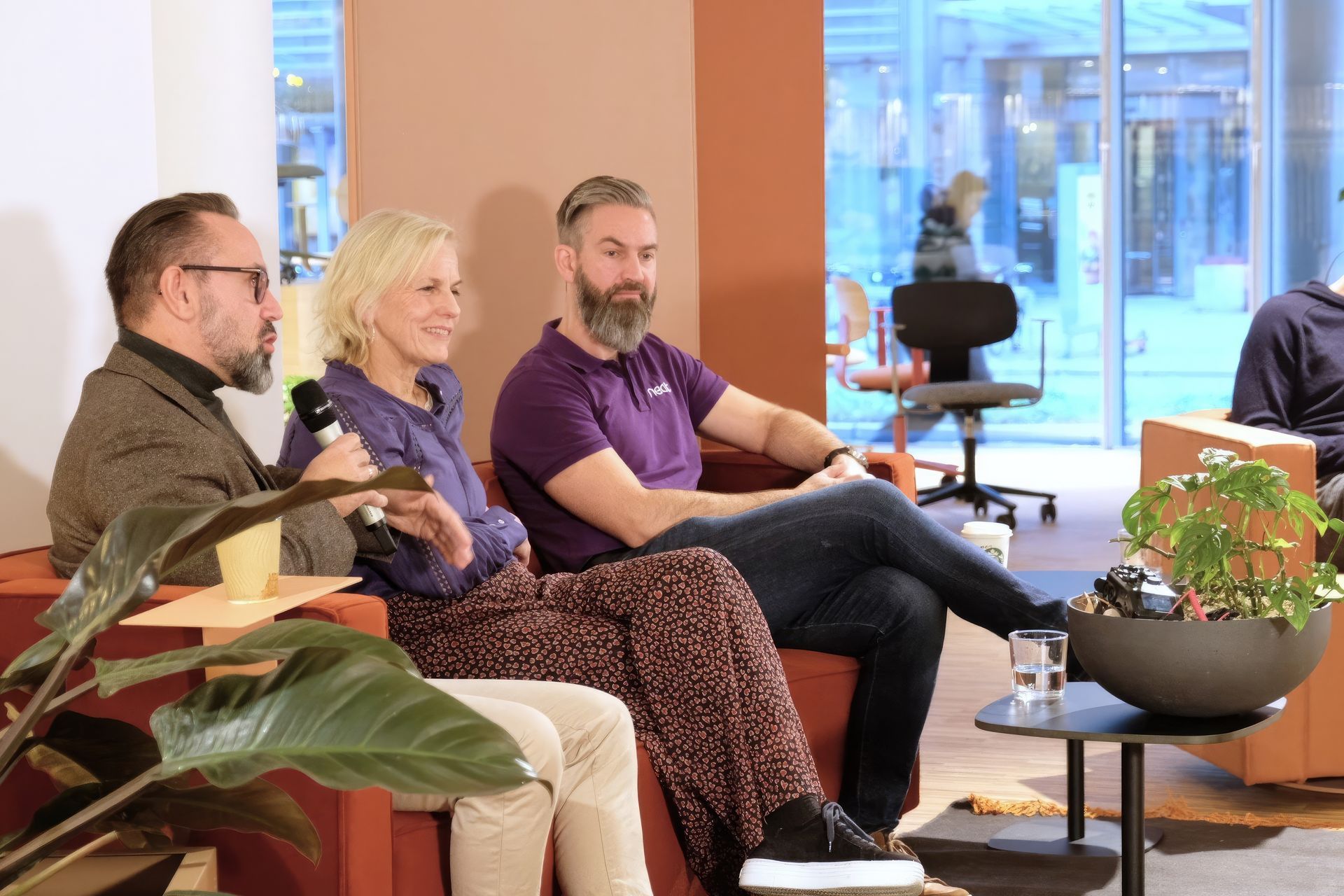Industry Insiders Share Insights on How to Design for Hybrid Work


Two years into its mainstream adoption, hybrid work continues to reign supreme in discussions about the contemporary office landscape. Unlocking the secrets to its successful implementation became the focal point of a compelling panel talk held at our Oslo showroom in October of this year.
The dialogue brought together a distinguished panel, featuring Simon Teigre, Chief of Emerging Innovation and co-founder of Neat, Lars Erik Morum, Team Technology Specialist at Microsoft, Heidi Tolo, Partner and Interior Architect at iARK, and Flokk's Chief Design Officer, Christian Lodgaard.
Delving into the heart of the matter, the discussion revolved around how businesses can seamlessly adapt their working patterns and physical spaces to optimise both productivity and the well-being of their workforce. Distilling the insights, three key pillars emerged—Leadership, Office Design, and Technology.

LEADERSHIP
The era of control-based leadership is giving way to a more nuanced, context-based approach. Dispelling the myth that physical presence directly correlates with results, the panel emphasised the importance of team efficiency over individual preferences.
The resounding message was clear: well-functioning teams thrive when navigating these dynamics collectively.
OFFICE DESIGN
Beyond being a mere physical space, the workplace should mirror and fortify the company's culture and identity. The strategic design of zones fostering spontaneous meetings and flexible collaboration areas has taken centre stage, a key benefit of working in the office unavailable when working remotely.
However, equally crucial was the call for dedicated concentration zones, countering the risk of the home office encroaching on focused workspaces.
TECHNOLOGY
Addressing the technological facets of hybrid work, the seminar underscored simplicity as the foundational principle. Seamless integration of technology, acting as a bridge between the virtual and physical realms, emerged as paramount.
The discussion brought attention to inclusive meeting practices, ensuring digital participants seamlessly participate in small talk and meeting closures.
Attendees were enlightened about evolving functionalities facilitating better tracking of employee presence in the office and meeting attendance.
A resounding reminder concluded this segment: in the realm of hybrid meetings, collective responsibility for maintaining energy and focus is paramount.
